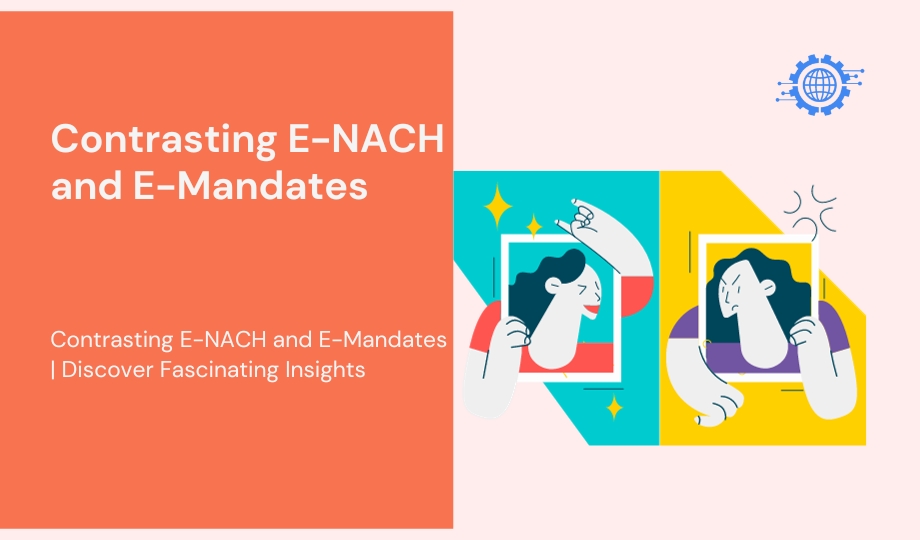Frequently, individuals tend to use eNACH and eMandates interchangeably, assuming they are identical. Surprisingly, they are not. Interested in understanding the distinctions between these terms? You’re in the right place. This blog delves into what eNACH and eMandates entail, their respective merits, and how they differentiate from each other. Read on for the full scoop.
Defining E-Mandates:
E-Mandates represent the digital equivalent of traditional paper-based mandates. They function as standing instructions whereby a customer grants their bank permission to debit their account and transfer funds to another bank account on specific dates. Customers have the flexibility to modify, register, or even delete these mandates online, often instantaneously.
E-Mandates typically come in three forms:
Physical Mandate: This method necessitates customers to fill out a physical form, involving a manual and time-intensive process.
eSign Mandate: Legitimized by the NCPI, eSign mandates employ Aadhaar e-signatures for authorization. Introduced to enhance speed and efficiency, eSign mandates became accessible to all banks on June 1, 2020.
API Mandate: This mandate is initiated electronically via the web, with customer credentials being digitally verified. Authentication methods include net banking and credit/debit card details.
Types of E-Mandates:
E-Mandates encompass two distinct categories:
Debit Mandate: As the name suggests, debit mandates facilitate periodic withdrawals from a customer’s account, ideal for scenarios like monthly SIP payments.
Credit Mandate: Credit mandates ensure timely payments are credited to your account without delays, particularly advantageous for businesses seeking consistent, hassle-free payments.
Understanding E-NACH Mandates:
E-NACH stands for National Automated Clearing House, a web-based solution designed to facilitate high-volume transactions for banks, financial institutions, corporations, NBFCs, and government entities. It serves as a centralized system that unifies various ECS systems across the nation, including hundreds of banks, eliminating regional limitations and obstacles.
Customers can digitally sign an E-NACH for debit or credit mandates, generating a Unique Mandate Registration Number (UMRN). The UMRN serves as the customer’s permission to periodically debit an agreed-upon amount.
Advantages of E-NACH and E-Mandates:
Enhanced Customer Retention: E-Mandates streamline regular payments, preventing customers from defaulting and ensuring uninterrupted service, ultimately fostering customer loyalty.
Seamless Payments: E-Mandates simplify the payment process, eliminating the need for customers to go through multiple steps, making payments more efficient and convenient.
Cost Reduction: E-Mandates reduce administrative costs by automating payment reminders, decreasing operational efforts.
Auto-Reconciliation: E-Mandates facilitate efficient record-keeping of payment details, simplifying the reconciliation process, eliminating the need for separate tools.
Simplicity: Implementing E-Mandates is a straightforward process requiring essential customer details, ensuring a hassle-free experience.
Flexibility: E-Mandates grant businesses the flexibility to modify payments, enhancing the relationship between the business and the customer.
Distinguishing E-NACH from E-Mandates:
While eNACH and eMandates exhibit only marginal differences, it’s crucial to recognize them:
E-NACH is governed by the NPCI, encompassing over forty banks, whereas eMandate is individually controlled by banks, typically around four banks.
E-NACH constitutes a framework encompassing a network of Electronic Clearing Services, allowing businesses to process recurring payments across different regions.
E-Mandates require customers to authorize a one-time net banking transaction, after which subsequent payments do not necessitate customer involvement. E-Mandates currently support net banking payments, with more payment modes anticipated.
In summary, E-NACH and E-Mandates represent efficient methods for businesses to collect periodic payments without continuous customer reminders, ensuring timely payments.

